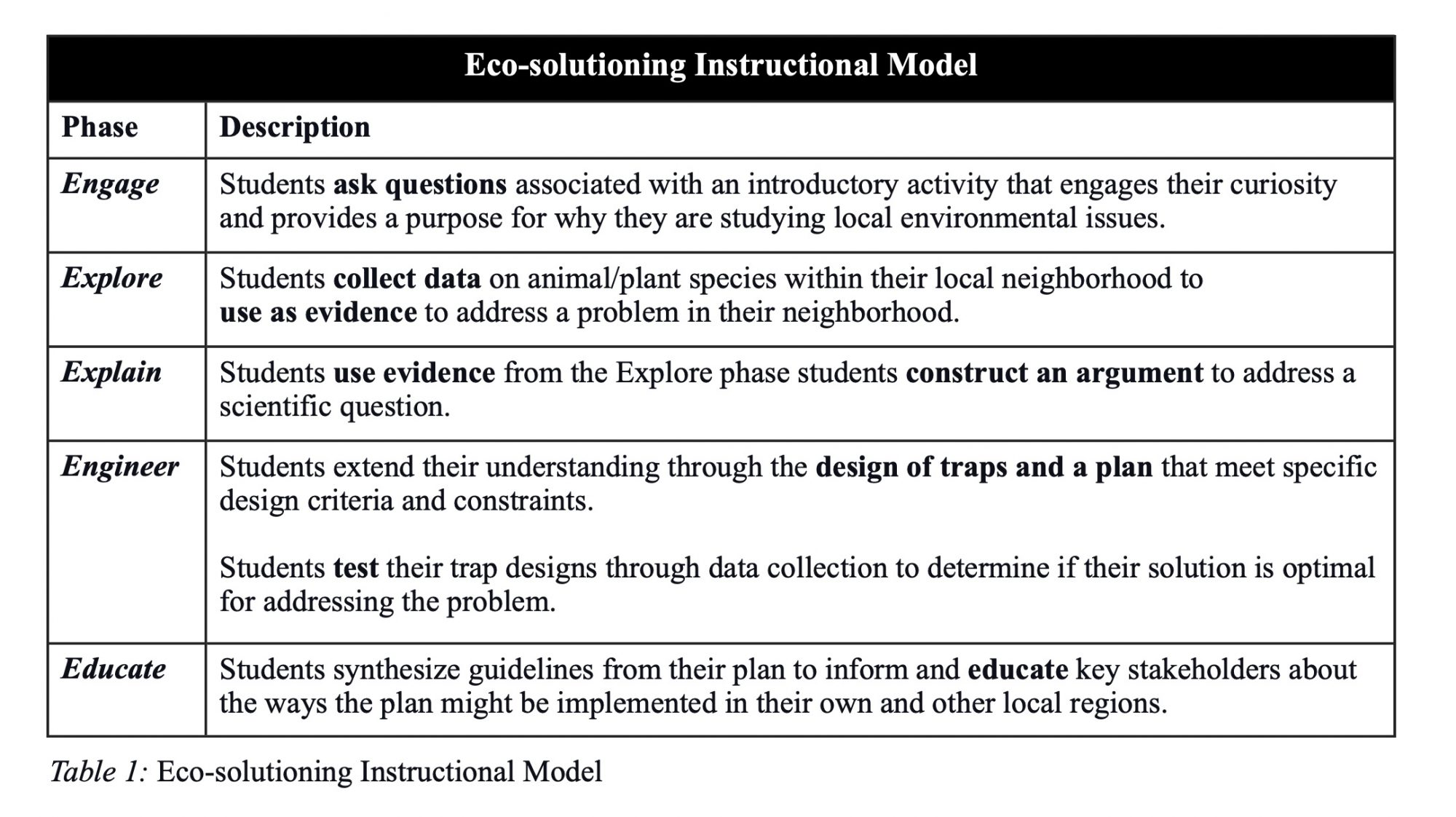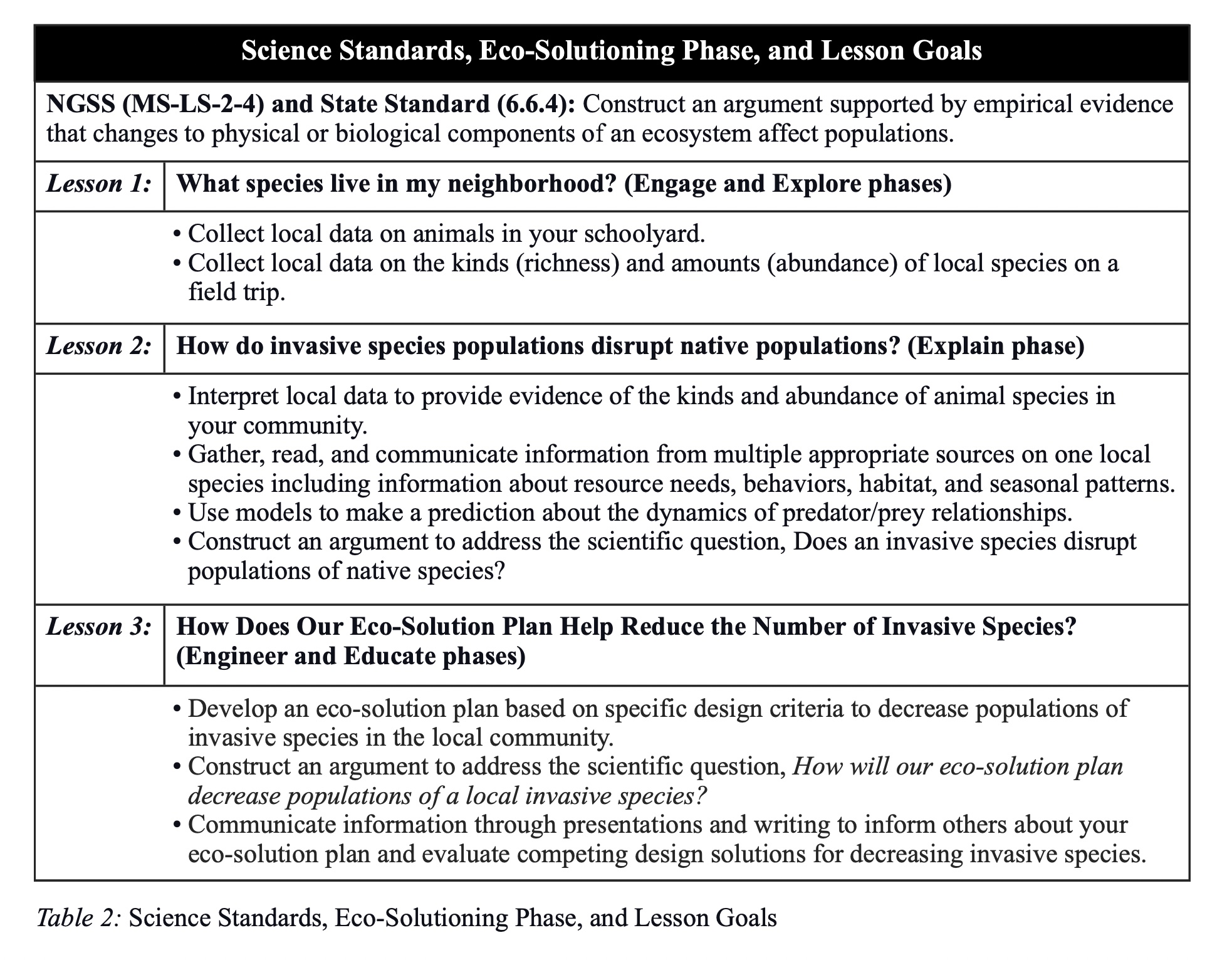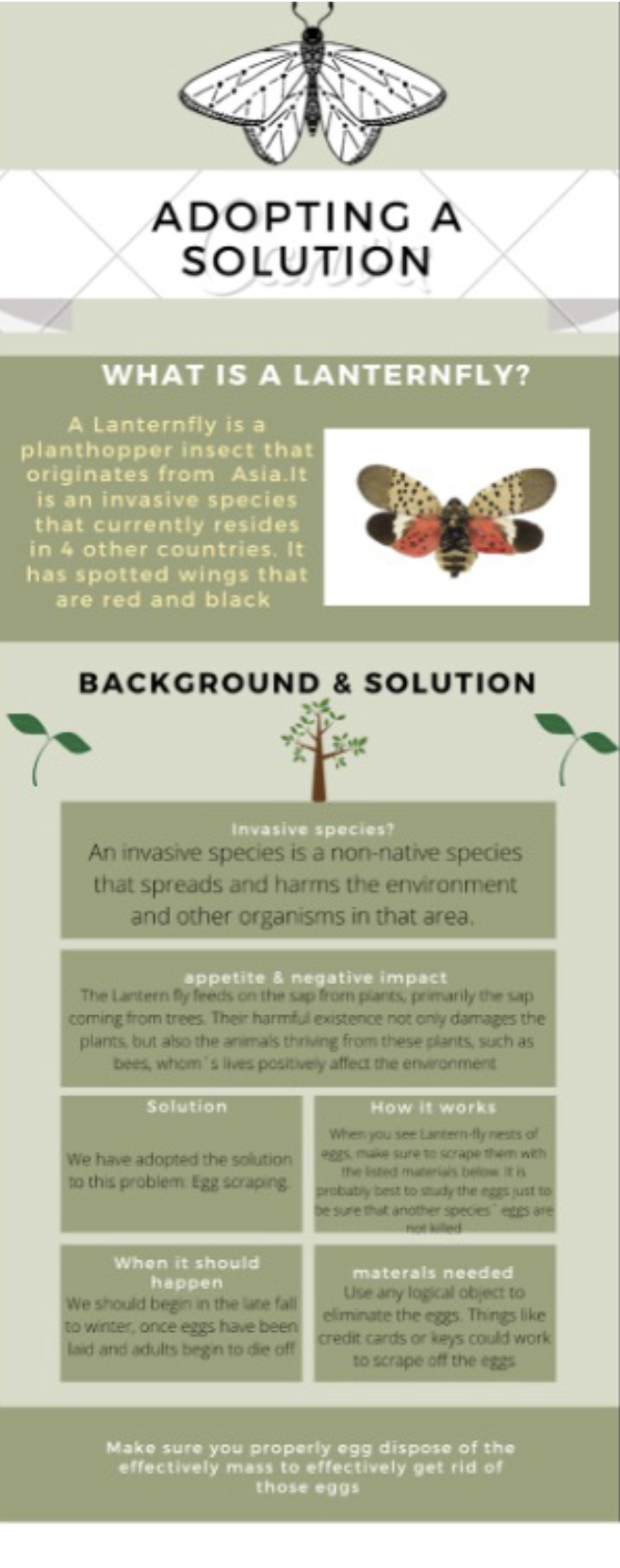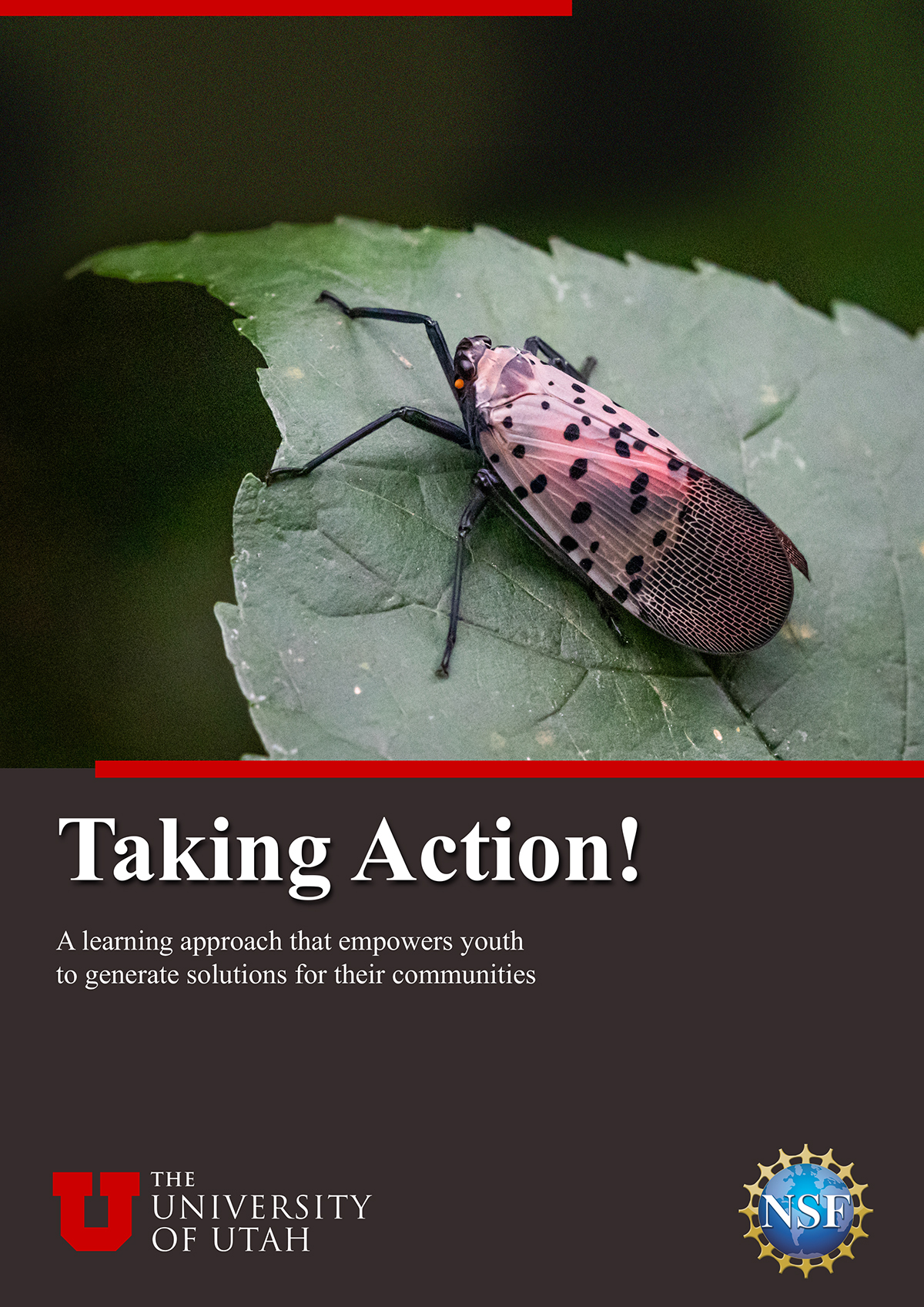Finding and promoting a learning approach that empowers youth to generate solutions for their communities
Increasingly, our world presents us with complicated, interdisciplinary problems that have foundations in science, technology, engineering, and mathematics (STEM). Whether we need a modification of a vaccine to challenge a virus variant, a sensor to monitor methane emissions on offensive garbage cans in urban areas, or the ability to design a water filtration system to increase the availability of potable water, we need to provide opportunities for our youth, ages 10-18, to deepen their learning through the creation of solutions to local challenges.
Recent surveys in the United States reveal that the average time devoted to teaching science in US elementary schools is 20 minutes per day, a few days a week (NRC, 2021).
Therefore, as teachers, parents, scientists, engineers, community members, and policymakers, we have a societal duty to empower adolescent students to ask questions, engage in scientific investigation, and work cooperatively with others to generate sustainable solutions to present and future interdisciplinary problems. The recent President of the National Academy of Sciences in the United States stated, “Today unless we can spread both scientific thinking and these critical scientific values much more broadly throughout society, I fear for humanity’s survival.” (Alberts, 2022).
 In the United States, the Next Generation Science Standards have changed our expectations of how to teach science. The most notable change has been the shift from students learning science as disconnected ideas toward learning science content (disciplinary core ideas and crosscutting concepts) through science and engineering practices (NRC, 2012). Instructional programs that extend the learning of STEM topics through solutions challenge the science education status quo. Many secondary curricular programs promote learning science content through science practices such as arguing from evidence and planning and carrying out investigations.
In the United States, the Next Generation Science Standards have changed our expectations of how to teach science. The most notable change has been the shift from students learning science as disconnected ideas toward learning science content (disciplinary core ideas and crosscutting concepts) through science and engineering practices (NRC, 2012). Instructional programs that extend the learning of STEM topics through solutions challenge the science education status quo. Many secondary curricular programs promote learning science content through science practices such as arguing from evidence and planning and carrying out investigations.
Yet, the focus on learning science through the engineering design of solutions is less common. Even fewer instructional programs highlight science learning through both scientific investigation and engineering design in tandem, even though crucial policy documents (e.g., National Research Council, 2012) identify learning science through both the practices of science and engineering as a mutually beneficial, creative, and iterative process (NRC, 2012).
This e-book describes a learning approach, Eco-solutioning, that guides youth to deepen their learning of biology content through the practices of both science and engineering. In addition, this e-book provides examples of activities and student work which illustrate our approach to learning interdisciplinary science content through investigation and engineering design.
Learning Biology through both the Practices of Science and Engineering
Even as the creators of the Next Generation Science Standards distinguish between the endeavour of science and the endeavour of engineering (NGSS Leads States, 2013), they explicitly discussed how the two endeavours are mutually beneficial. The authors distinguish between the practices of science and engineering in two places:
- Practice 1 is Asking Questions (for science), Defining Problems (for engineering)
- Practice 6 is Constructing Explanations (for science) and Designing Solutions (for engineering) (NGSS Leads States, 2013).
 Indeed, learning approaches have often unintentionally emphasised learning science through either the practices of science or engineering but not both. For example, the 5-E learning model (Bybee, 2006) emphasises learning science through inquiry investigations. Other programs emphasize learning science through only the practices of engineering (Guzey et al., 2017; Crotty, Guzey & Roehrig, 2017). Policy documents also emphasise that teaching through only one kind of practice often masks the interconnected nature of the two pursuits. Drawing inspiration from this idea, our learning approach intentionally and explicitly emphasises learning biology content through science and engineering practices.
Indeed, learning approaches have often unintentionally emphasised learning science through either the practices of science or engineering but not both. For example, the 5-E learning model (Bybee, 2006) emphasises learning science through inquiry investigations. Other programs emphasize learning science through only the practices of engineering (Guzey et al., 2017; Crotty, Guzey & Roehrig, 2017). Policy documents also emphasise that teaching through only one kind of practice often masks the interconnected nature of the two pursuits. Drawing inspiration from this idea, our learning approach intentionally and explicitly emphasises learning biology content through science and engineering practices.
Eco-solutioning
What would a learning approach look like that fosters science learning through scientific investigation and the engineered design of solutions? Table 1 provides an overview of the five phases of our learning approach, called Eco-Solutioning. Eco-solutioning builds on the 5-E learning cycle (Bybee, 2006) and uses a similar sequence for the first three phases,
Engage, Explore, and Explain. In these phases, students learn about local animals, invasive insects, biodiversity, and food web disruption through asking questions, collecting data on the kinds and amounts of local animals they observe, analysing their data, and using their data to construct arguments about animal abundance and species richness in their local community.
The fourth and fifth phases, Engineer and Educate, guide the learning of life science content through engineering practices, including the design and testing of an eco-solution plan to trap or mitigate a local invasive insect. In Educate, students select vital components of their trap design or their solution to share with local community members and others. The instructional materials consist of six weeks of field-based activities, field-based resources for students’ identification and organisation of their observational data on local animals, assessments and rubrics, and teacher professional development resources. Table 2 provides an overview of the science standards, lesson goals, and Eco-solutioning phases for the entire unit. Overall, the sequence of learning goals illustrates a plan for how individual learning goals build on one another to deepen the understanding of the science content through engagement with the practices of both science and engineering. For a complete look at the instructional materials, please visit our website.
 Youth generated solutions: Examples of activities and student work
Youth generated solutions: Examples of activities and student work
In this section, we provide examples of activities and student work generated from two rounds of implementation with youth ages 11-14. Research studies were conducted with 94 students and three teachers from three culturally, racially, and linguistically diverse schools. Results demonstrated that students achieved significant learning gains after involvement in the eco-solutioning programme (Songer and Ibarrola Recalde, 2021).
The program begins with Lesson 1: What Species Live in My Neighborhood. In these activities, student learning is organised around a series of field-based activities that guide students in making observations of local animals using a field-based tool, the Animal Diversity Web (ADW) Pocket Guide. The ADW Pocket Guide (Figure 1) was created specifically for youth field-based data collection and analysis. The tool provides access to images and information on the animal species students are most likely to observe in their geographic region.
The curricular activities provide several instances for students to gather data about animals near their school or in a local park. The first observation is relatively unguided, providing students with an opportunity to develop a working knowledge of what constitutes a good observation. In the second observation, students are tasked with creating at least five notes with evidence of animals observed and pictures, if available, of the animals they observe using the ADW Pocket Guide tool. After all field-based observations, student data are organized into a class spreadsheet (Figure 2) and for the creation of bar graphs used for evidence in argument construction (Figure 3).
 Next, the teacher leads a sense-making class discussion about the definition of biodiversity and the scientific terms abundance and species richness, using students’ data to explain these terms. The teacher fosters the conversation with questions such as “what data did you use as evidence to determine species abundance?” or “Did anyone use different data to come to their conclusion?” After students analyse their data, they draw on it to construct scientific arguments. Students then return to their data to re-evaluate what their data indicate. Students also use an online learning platform with resources such as age-appropriate scientific term definitions, readings, and examples of biodiversity and how it is calculated.
Next, the teacher leads a sense-making class discussion about the definition of biodiversity and the scientific terms abundance and species richness, using students’ data to explain these terms. The teacher fosters the conversation with questions such as “what data did you use as evidence to determine species abundance?” or “Did anyone use different data to come to their conclusion?” After students analyse their data, they draw on it to construct scientific arguments. Students then return to their data to re-evaluate what their data indicate. Students also use an online learning platform with resources such as age-appropriate scientific term definitions, readings, and examples of biodiversity and how it is calculated.
In Lesson 2: Ecosystem Interactions, students again collect data, analyse data for evidence, and construct arguments. This lesson begins with students collecting data from a simulation around invasive insects. Students utilize the simulation to make predictions of ecological stability and possible changes in population numbers with the introduction of invasive species. The analysis compares the differences between population numbers of bugs, grass, and birds before and after the introduction of the invasive insect. The study provides evidence for students to create an argument to address the scientific question: Are invasive insects harmful to other organisms?
In Lesson 3: Reducing the Number of Invasive Species, students begin their engineering task with a letter from the Department of Agriculture that tasks them with designing traps to reduce the number of one of a set of local invasive insects in their area. The letter asks student teams to consider the following constraints:
- Cost of implementation ($200 to create their traps)
- The amount of time (2 hours to set up the traps)
- Maintenance of the traps (weekly to change trapparts or dispose of captured insects)
 As a first step in preparing for their design, students conduct background research on their invasive insect, including their life cycle, seasonal constraints, diet, how it impacts the local environment, and predators (usually none). Then students go outside to study their schoolyard and possible locations for their traps. For example, the students might select locations for their traps near bodies of water since many insects congregate around there. On the other hand, they might determine that water sources are inappropriate as they might collect native insects instead of invasive ones. Students then work in teams and with the supplies provided to create a prototype of their trap design. The prototype represents the culmination of the work in deepening their understanding of local ecology through science and engineering practices.
As a first step in preparing for their design, students conduct background research on their invasive insect, including their life cycle, seasonal constraints, diet, how it impacts the local environment, and predators (usually none). Then students go outside to study their schoolyard and possible locations for their traps. For example, the students might select locations for their traps near bodies of water since many insects congregate around there. On the other hand, they might determine that water sources are inappropriate as they might collect native insects instead of invasive ones. Students then work in teams and with the supplies provided to create a prototype of their trap design. The prototype represents the culmination of the work in deepening their understanding of local ecology through science and engineering practices.
Figure 4 presents plans and trap designs for capturing two different invasive insects: the spotted lanternfly common in the eastern United States and the brown marmorated stink bug, which is common in the high mountain desert of the United States.
Conclusions
The world’s challenges are not simple, and the solutions that address these challenges require engineering design, creativity, testing, and practice. Such solutions also require thinking beyond traditional approaches and narrow boundaries of current science learning. Instructional strategies such as Eco-Solutioning guide students to not just learn ecology and biodiversity concepts but to take action and use their disciplinary knowledge to design interdisciplinary solutions. Such thinking is crucial for all our futures.

References:
- Alberts, B. (2022) Why science education is more important than most people think: The scientists’ forum. FEBS Letters 596 (149– 159) Federation of European Biochemical Societies.
- Bybee, R., Taylor, J. A., Gardner, A., Van Scotter, P., Powell, J., Westbrook, A., and Landes, N. (2006). The BSCS 5E Instructional Model: Origin, Effectiveness, and Applications. Colorado Spring, CO: BSCS,
- Crotty, E. A., Guzey, S. S., Roehrig, G. H., Glancy, A. W., Ring- Whalen, E. A., & Moore, T. J. (2017). Approaches to integrating engineering in STEM units and student achievement gains. Journal of Pre-College Engineering Education Research, 7(2), 1.
- Guzey, S. S., Harwell, M., Moreno, M., Peralta, Y., & Moore, T. J. (2017). The impact of design-based STEM integration curricula on student achievement in engineering, science, and mathematics. Journal of Science Education and Technology, 26(2), 207-222.
- National Research Council [NRC]. (2012). A Framework for K-12 Science Education: Practices, Crosscutting Concepts, and Core Ideas. Washington, DC: The National Academies Press. https://doi.org/10.17226/13165.
- National Research Council [NRC] (2021). Science and engineering in preschool through elementary grades: the brilliance of children and the strengths of educators. National Academies Press; https://doi.org/10.17226/26215
- NGSS Lead States. (2013). Next Generation Science Standards: For States, By States. Washington, DC: The National Academies Press.
- Songer, N.B. and Ibarrola Recalde, G. (2021) Eco-Solutioning: The design and evaluation of a curricular unit to foster students’ creation of solutions to address local socio-scientific issues.
- Frontiers Educ. 6:642320. doi: 10.3389/feduc.2021.642320
For more information, you can find the full ebook on this page


